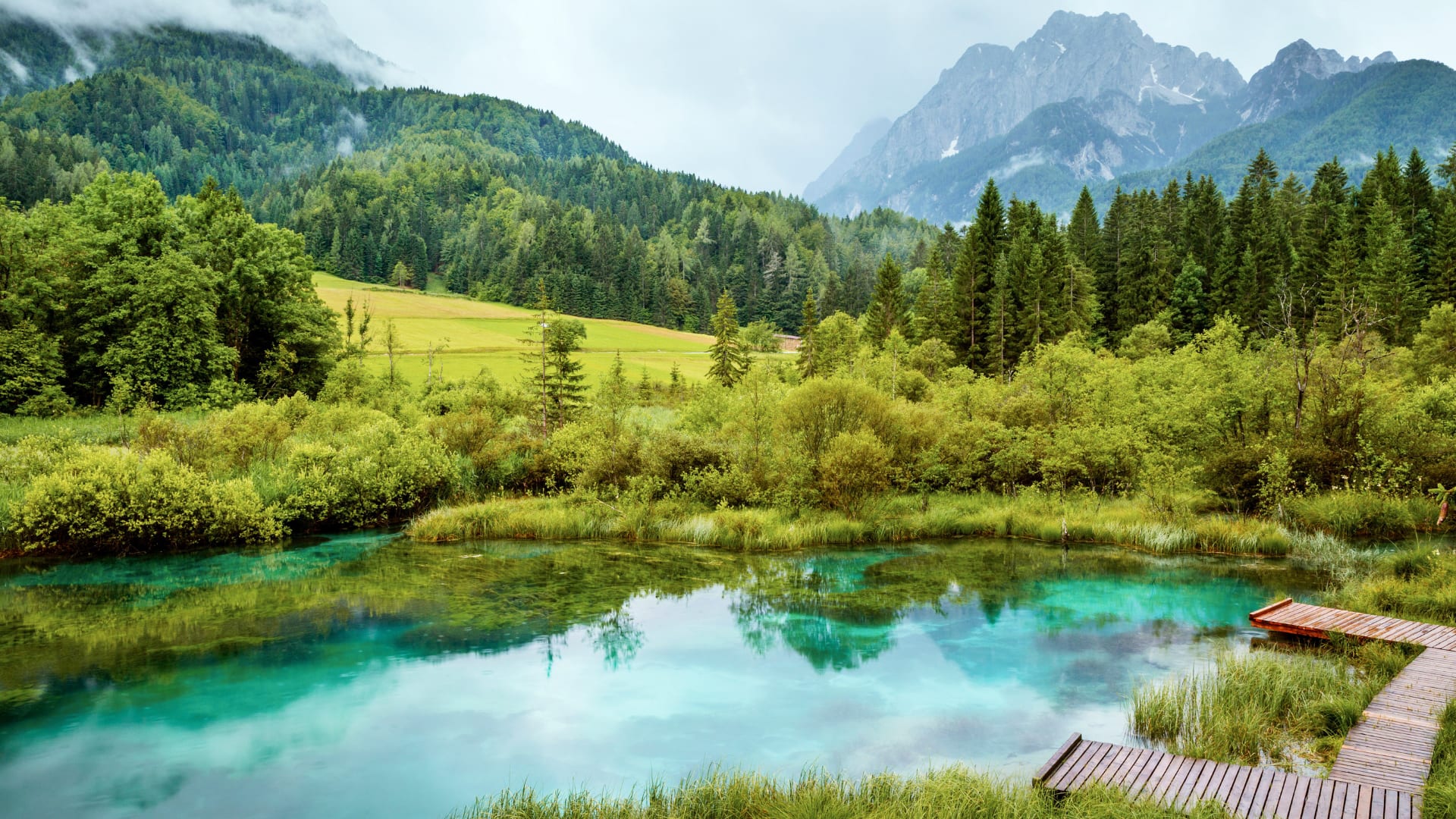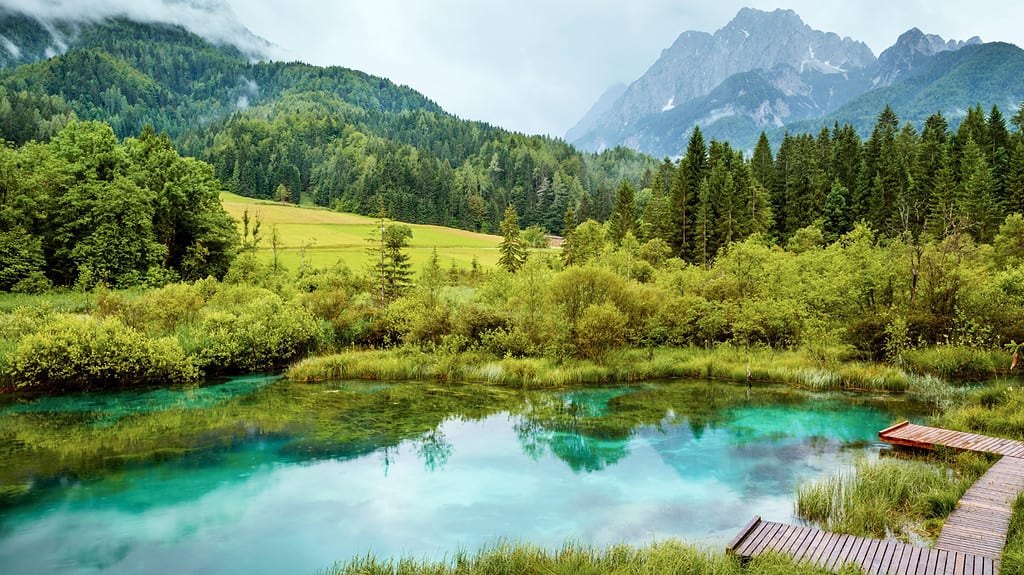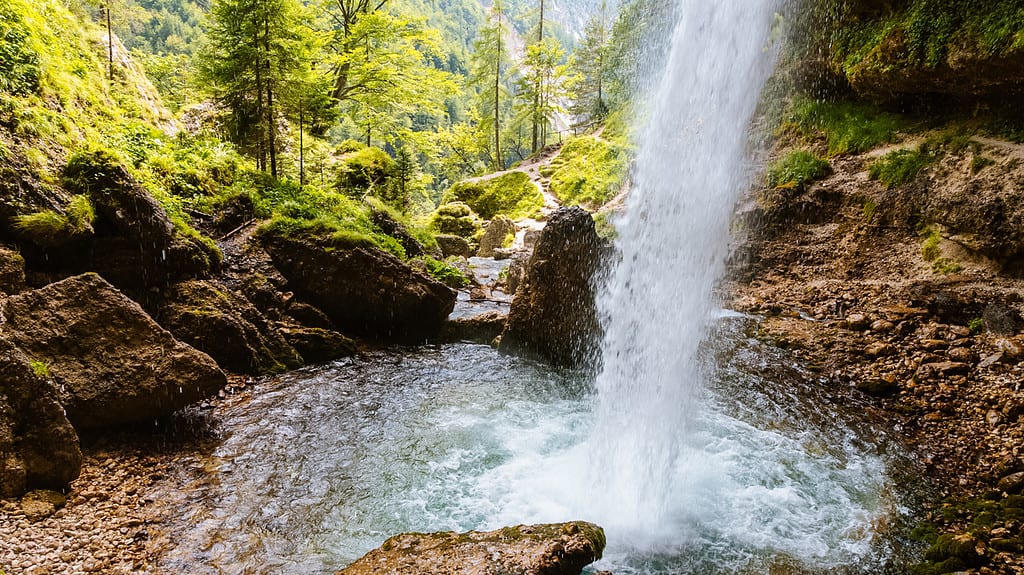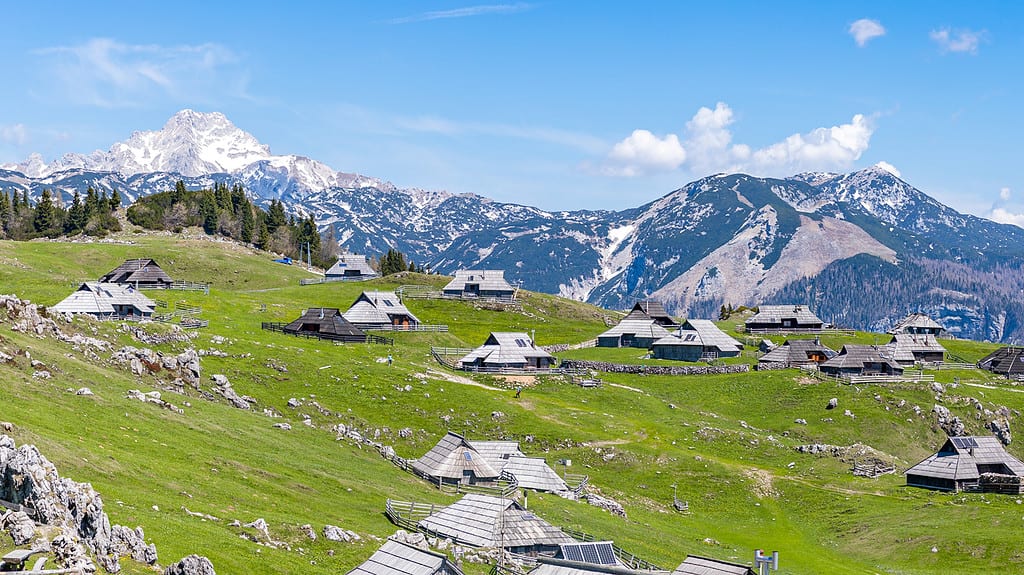TRAVEL GUIDE FOR SLOVENIA
Discover Slovenia, a country where beautiful nature, rich culture and picturesque cities come together. From green mountain rivers like the Soca, ideal for rafting, to the UNESCO-listed Postojna Caves.
BEST PLACES IN SLOVENIA
20 Things to do in the Julian Alps, Slovenia (+ map): Best hikes
The Julian Alps are among the most beautiful mountains in Slovenia. With high…
15 tips for hiking trails and things to do in Triglav National Park, Slovenia (+ map)
If you love beautiful nature and hiking, the Triglav National Park and the…
20 Best Things to do in Slovenia: Top Places to visit (+ map)
Slovenia is the jewel of Europe, combining Alpine beauty, Mediterranean charm and endless…
USEFUL INFORMATION
When to visit Slovenia
Slovenia is a great destination all year round. Here is an overview of what you can expect in each period:
Spring (March to May): Spring is the ideal time to visit Slovenia if you prefer mild weather and want to avoid the summer crowds. Temperatures are pleasant, nature is waking up to life and the whole country is blooming. It is an ideal season for sightseeing, hiking and visiting natural attractions such as Postojna Cave and Škocjan Caves.
Summer (June to August): The Slovenian summer is warm, with temperatures reaching a pleasant 25°C and above, ideal for beach lovers, water sports and festivals. Slovenia boasts beautiful lakes such as Bled and Bohinj and clear rivers that are perfect for swimming, canoeing and rafting. At the same time, expect higher prices and more visitors in popular tourist locations during this period.
Autumn (September to November): Autumn in Slovenia is a great season due to the cooling temperatures and fewer tourists. This season is still warm, which is ideal for hiking, cycling and visiting vineyards where you can experience the vintage and taste the local wines.
Winter (December to February): The winter months are ideal for winter sports enthusiasts, with many ski resorts offering great conditions for skiing and snowboarding. Winters can be cold but often sunny, with temperatures around zero to slightly below zero.
Transport in Slovenia
Public transport
Travelling around Slovenia is comfortable and efficient thanks to a well-organised and extensive transport system, which includes trains and buses.
Train transport is a key part of transport in Slovenia. Slovenian Railways (Slovenske železnice) operates trains that connect major cities and regions, including Ljubljana, Maribor, Celje and Koper. The train network also offers scenic routes, such as through the Julian Alps or to the border areas with Italy and Austria.
For areas not covered by the train network, buses provide comprehensive coverage of the country. Bus companies such as Arriva and Nomago operate an extensive network of routes connecting cities, rural areas and tourist destinations including Lake Bled, Bohinj and Piran.
The buses are comfortable, mostly air-conditioned, and offer an affordable way to travel around Slovenia. Information about connections and tickets can be found on the websites of the transport companies.
By car in Slovenia
The road network in Slovenia is well developed and provides good connections between major cities, tourist destinations and remote areas.
Motorways in Slovenia are toll roads. The toll for Slovenia in 2024 is €16 for 7 days and €32 for 1 month. Buy the vignette on the official website. I don’t recommend buying a vignette on other sites – they are significantly more expensive and offer no advantage.
The maximum speed limit on motorways in Slovenia is 130 km/h, 90 km/h on main roads and 50 km/h in populated areas, unless otherwise stated.
Parking in Slovenia is generally well signposted, with ample on-street and parking house parking. In larger cities and at major tourist attractions, parking is often charged. In cities like Ljubljana, using P+R (Park and Ride) car parks is a popular and cost-effective alternative for those who want to explore the city without the hassle of parking in the centre.
Culture and tradition in Slovenia
Culture
Cities in Slovenia are intertwined with history and culture, where traditional Slovenian architecture mixes with modern art and design. Ljubljana and Maribor, two of the largest cities, are home to many museums and galleries that showcase both a rich cultural heritage and a contemporary art scene.
You can experience the culture of Slovenia at live music festivals and folklore evenings, where traditional Slovenian music and dance are performed.
Slovenia has a strong emphasis on literature and poetry, with a rich tradition of book festivals and literary evenings celebrating local and international authors.
Traditions and festivals
Slovenia is a country deeply rooted in traditional values, which is reflected in everyday life, from its cuisine and architecture to its festivals and folk customs. Catholicism plays an important role in Slovenian society, as can be seen in the many religious festivals such as pilgrimages and patronal feasts.
Family values are very important in Slovenia, which is reflected in frequent family gatherings and celebrations.
Slovenia hosts a number of unique festivals, such as the Kurentovanje in Ptuj, a traditional carnival that welcomes spring and is a UNESCO Intangible Cultural Heritage Site. Another important festival is the Bled Days, when Lake Bled comes alive with traditional boats, fireworks and cultural performances.
Typical dishes in Slovenia
The cuisine in Slovenia is rich and varied, influenced by the country’s geographical location, where influences from the Alps, the Mediterranean, the Pannonian Plain and the Balkans meet. Each region in the country offers its own unique specialities, from delicious meat dishes to delicious desserts.
Typical and popular dishes you can taste in Slovenia include:
- Kranjska klobasa: traditional sausage with a distinctive taste, served with sauerkraut and roasted potatoes
- Curd chips: A simple but tasty dish of boiled potatoes with a salty curd spread, typical of the Slovenian Alps.
- Jota: A thick soup with sauerkraut, beans, potatoes and a piece of meat, popular in the colder months.
- Bled kremšnita: A famous dessert from Bled, consisting of a layer of vanilla cream and whipped cream between two layers of crisp pastry, served chilled.
- Slovenian wines: Slovenia is famous for its wine production, especially white wines, but also excellent red wines from regions such as Vipava Valley, Goriška Brda or Podravje. Wines like Rebula, Teran or Modra Frankinja are an important part of the food culture.
Slovenian cuisine emphasises quality and freshness of ingredients, with an emphasis on seasonality and regionality. Slovenian wines are often served with meals.
Tipping in restaurants in Slovenia is not compulsory, but it is common to round up the bill or leave a small tip (5-10%) as an expression of satisfaction with the service. This gesture is always appreciated and is a sign of good manners.
☞ See all destinations.



